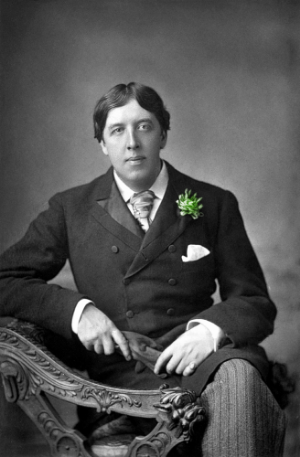
Green Carnations
- Nearly a century before the Rainbow Pride flag came onto the scene, LGBT people- most notably Gay men- used another symbol to identify and connect with each other. The green carnation was to be worn in the buttonhole of a man’s suit starting in the late 1800s. It was a symbol of the aesthetic movement as well as loving whoever you chose to love.
- This symbol was first brought into the Gay community by talented playwright Oscar Wilde, an LGBT icon. He had an actor wear one of these synthetically-dyed flowers onto the stage during a production of Lady Windermere’s Fan. The unnatural, dyed flower was deemed unusual and beautiful, though Wilde laughed that it was simply beautiful for the sake of being beautiful.
- From there, men began to wear the flower as a show of support for Wilde and his aesthetic ‘beauty for beauty’s own sake’ philosophy. It became associated with homosexuality, too, since Wilde was a known lover of men. When Wilde was prosecuted for loving men, people wore the green carnation to show support and solidarity.
- To this day, the green carnation is remembered as one of the first—if not the first—popular symbols of the Gay community.
There are no comments yet.